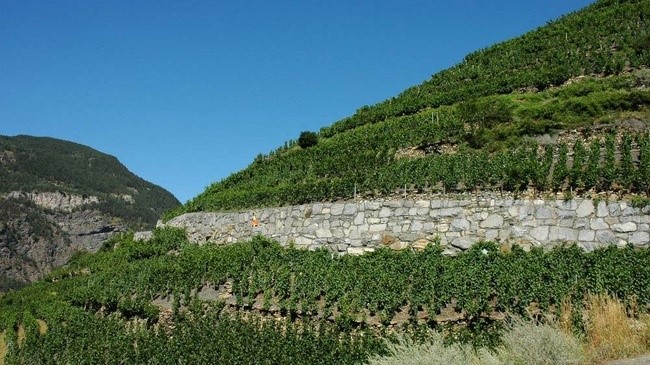
At high altitudes, the air is dry, the weather often sunny and breezy. Ideal conditions for winegrowing?
Let’s have a closer look at some famous high altitude vineyards and if the advantages of winegrowing in the mountains outweigh the potential challenges.
What actually means “high altitude vineyard”? There is no set definition on what is considered a “high altitude vineyard”. Does it start at an elevation of 1000 meters above sea level (asl) or already at 300 meters asl?
Elevation does not seem to be the only criteria that creates characteristics associated with high altitude vineyards. Other relevant factors include the degree and distance of the hillside slope, the latitude as well as other localized climatic and topographical factors.
Advantages of high altitude vineyards
At high altitudes, the sunlight intensity increases which causes grapes to develop thicker skins, an increased concentration of tannins as well as a higher natural acidity level –essential for wines with ageing potential.
One of the most favorable and important factors in winegrowing in high elevation is the shift between hot day and cool night temperatures. These diurnal shifts force grapes to ripen slowly and to produce wines with both natural acidity and flavor.
Another positive side effect of the weather conditions in high altitudes is that wine makers can cut back the use of nasty chemicals as pests are kept at bay.
Challenges of high altitude vineyards
Potential challenges associated with high elevation include an increased risk of frost, the effects of extreme weather conditions such as heavy rains, winds and hails that can damage the vines.
Soils at high altitudes are often uneven and soil fertility is variable. Areas with high differences in altitude have variable grape maturation rates from bottom to top. Additionally, as you can imagine the management and vineyard cultivation is more complex and expensive.
Let’s now take a closer look at three popular high altitude wine regions and their wines…
1.) Argentina- The highest vineyards in the world
Argentina is the country with the highest concentration of high altitude vineyards. Since the 1990s Argentine wine growers are planting vineyards at ever higher altitudes with the intent to extend the growing season and to increase flavor as well as balanced natural acidity and sugars in the grapes. Most viticulture in Argentina takes place in the foothills of the Andes (and most famously in Mendoza) at an average altitude of 900 meters above sea level.
The highest vineyards in the world are from Donald Hess in Salta in the north of the country. Donald Hess‘ Colomé Estate, by the way the oldest operating winery in Argentina, has vines at an altitudes of over 3,000 meters asl that are called “Altura Maximá”.
Tasting note: Bodega Colomé, Salta, Argentina. Vineyards: 1700- 3111 meters above sea level.
It’s a fruity, elegant wine with intense aromas of black and red fruits, very nice with a barbeque.
2.) Switzerland – the highest vineyards in Europe
Surrounded by the famous peaks of the Swiss Alps, the highest vineyards in Europe grow at an altitude of up to 1150 meters in a small village in Switzerland: The vineyards of Visperterminen in Valais. The most popular wine from Visperterminen is called “Heida”. Heida means white wine in “Valais” dialect and is vinified from the grape variety Savagnin.
Tasting note: Valais AOC Heida Fleur du Rhône 2015, 1000 meters asl.
It’s a fresh white wine with flavors of citrus and exotic fruits. Typically enjoyed with a variety of Swiss alp cheese, fish or mushroom dishes.
3.) Colorado – the highest vineyards in the U.S.
The U.S. state of Colorado is one of the mountain states encompassing most of the Southern Rocky Mountains. Colorado’s vineyards range in elevation from 1200 meters to about 2000 meters and are by far the highest vineyards in the U.S. and among the highest vineyards in the world. The majority of the vineyards are located in the central part of the state near Colorado Springs, Denver and Boulder.
The climate is characterized by cool nights and hot days. Although you have probably not yet heard of the wineries of Colorado, it is worth to try those wines!
Tasting note: Turquoise Winery, 2013 Syrah.
It’s a full bodies wine with aromas of black fruits and spices- pairs well with bold foods such as burgers or barbeque.
Whether wines from “high altitude” vineyards really taste better than those from the plain, is left to you. It is all but certain that there are many high altitude vineyards producing excellent wines and it is always worth visiting them!
And of course there are many more great “high altitude” wine regions, such as on the Canary Island in Spain, in Bolivia, Mexico or Nepal… to name but a few.
Frauke
Picture: Visperterminen in Switzerland with characteristic „Trockensteinmauern“ (dry stone walls), source: www.myswitzerland.ch















